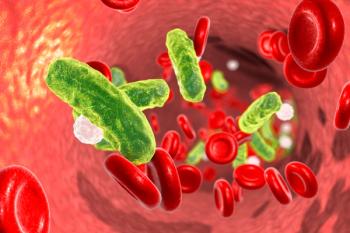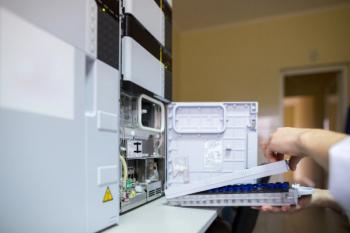
Researchers Develop Chiral Metal-Organic Framework for Enantioseparation of Drugs by Capillary Electrochromatography
Researchers have synthesized a chiral metal-organic framework (MOF) called L-histidine-zeolitic imidazolate framework-67 (L-His-ZIF-67) for enantioseparation of drugs in capillary electrochromatography. The chiral MOF demonstrated excellent separation efficiency for five chiral drugs, offering promising possibilities for pharmaceutical analysis and quality control.
Scientists at the China Pharmaceutical University in Nanjing, China have successfully synthesized a chiral metal-organic framework (MOF), known as L-histidine-zeolitic imidazolate framework-67 (L-His-ZIF-67), by mixing chiral and non-chiral organic ligands (1). This novel MOF was used as a chiral stationary phase in open-tubular capillary electrochromatography to achieve the enantioseparation of drugs, offering promising possibilities for pharmaceutical analysis. The findings of this study were published in the Journal of Chromatography A.
Electrochromatography is a hybrid separation technique that combines the principles of both chromatography and electrophoresis. It involves the separation of analytes based on their differential partitioning between a stationary phase and a mobile phase under the influence of an electric field. The stationary phase can be a solid material with embedded charged groups, such as a chiral MOF, while the mobile phase typically consists of a liquid electrolyte.
To date, the development of a chiral L-His-ZIF-67 coated capillary column for capillary electrophoresis had not been reported in the field. The researchers optimized various separation conditions such as pH value, buffer concentration, and the proportion of organic modifier. Under the optimized conditions, the enantioseparation system demonstrated excellent separation efficiency, yielding high resolutions for five chiral drugs: esmolol (7.93), nefopam (3.03), salbutamol (2.42), scopolamine (1.08), and sotalol (0.81).
The team also conducted a series of mechanism experiments to elucidate the chiral recognition mechanism of L-His-ZIF-67. Through these experiments, they were able to preliminarily speculate on the specific interaction forces involved in the separation process.
Yingxiang Du, the lead author of the study, highlighted the significance of their research, stating that the work showcases the successful synthesis and application of a chiral metal-organic framework for enantioseparation in capillary electrochromatography. This approach also holds promise for efficient and accurate analysis of chiral drugs, which is essential in pharmaceutical research and quality control.
The development of effective enantioseparation methods is crucial in pharmaceutical analysis, as the different enantiomers of a drug often exhibit distinct pharmacological activities. Accurate identification and quantification of these enantiomers are essential for drug efficacy and safety. The utilization of the chiral MOF, L-His-ZIF-67, as a chiral stationary phase provides a novel avenue for achieving high-resolution enantioseparation in open-tubular capillary electrochromatography.
The successful synthesis and application of L-His-ZIF-67 in enantioseparation further expands the possibilities for chiral separation techniques, contributing to the advancement of pharmaceutical analysis. The findings of this study open up new avenues for developing efficient and selective methods in drug research, development, and quality control.
Reference
(1) Zhang, M.; Chen, J.; Xu, G.; Yu, T.; Du, Y. A chiral metal-organic framework synthesized by the mixture of chiral and non-chiral organic ligands for enantioseparation of drugs by open-tubular capillary electrochromatography. J. Chromatogr. A 2023, 1699, 464029. DOI:
Newsletter
Join the global community of analytical scientists who trust LCGC for insights on the latest techniques, trends, and expert solutions in chromatography.




